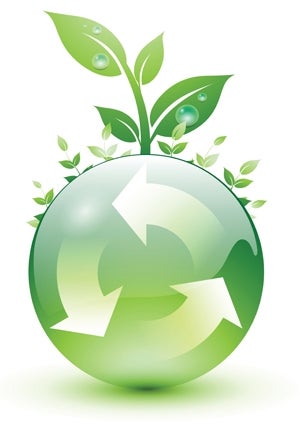Today’s economy requires a proactive quest for cost-savings opportunities. It should also inspire companies to go green. The adoption of more sustainable practices can decrease environmental impacts and benefit the bottom line. Start with the low-hanging fruit, and then invest savings into technologies that will enable additional cost reductions.
Power Down, Profits Up
An easy way to save money and energy is to eliminate idling office equipment. Make sure that computers, printers, and copiers are turned on only as needed by programming them to “sleep” when not in use. Also train staff to turn off such equipment at the end of the day. A company can save anywhere from $25 to $75 per year on each piece of office equipment. Providing power strips will make it even easier to power down all desktop devices with just one click.
Seeing The Light
Encourage your employees to maximize the benefit of daylight and turn off lights in unoccupied areas. Occupancy sensors in conference rooms and bathrooms can deliver meaningful savings within two years. Taking that one step further, Energy Star-rated compact florescent lights (CFLs) can provide $30 worth of savings in decreased energy use. Additionally, they last longer and generate less heat than incandescent bulbs, but remember that they require proper disposal.
But it’s more than just lighting. Don’t waste money and energy on unnecessary heating and cooling. The installation of programmable thermostats will allow you to use less energy when the building is unoccupied. And whenever possible, discourage the use of space heaters that constantly run in wide-open, unoccupied areas.
Slow The Flow
Water conservation is another area to save resources and dollars. By properly insulating water tanks and pipes, you’ll keep hot water hot without the need of unnecessary energy. And when it comes time to replace faucets and bathroom fixtures, remember to use low-flow toilets and faucets with aerators and flow restriction. Every drop counts.
Reduce, Recycle, Reuse
By reducing your use of many office supplies, you can minimize purchases and waste management costs. To achieve this goal, you may need to require double-sided printing for all multi-page print jobs, and of course, you should discourage unnecessary printing altogether.
When it comes to kitchen areas, a filter on the sink faucet will eliminate the need for bottled water, and stocking your kitchen areas with reusable cups, bowls, and plates will put a stop to any reliance on disposable products.
Environmental Impacts
Keep in mind, reuse activities can also deliver environmental and economic efficiencies. When cleaning out desks, cubicles, and offices, return unused office supplies to supply cabinets. This will reduce the frequency in which you must reorder supplies. But don’t forget about other organizations—schools and nonprofits can benefit from your unneeded office supplies. And when it comes to packaging materials, look to reuse the boxes and other materials that you receive from others. Doing so will greatly reduce your need to reorder these materials.
Dona Neely is the executive director of the Devens Eco-Efficiency Center. She can be reached at donaneely@ecostardevens.com.

